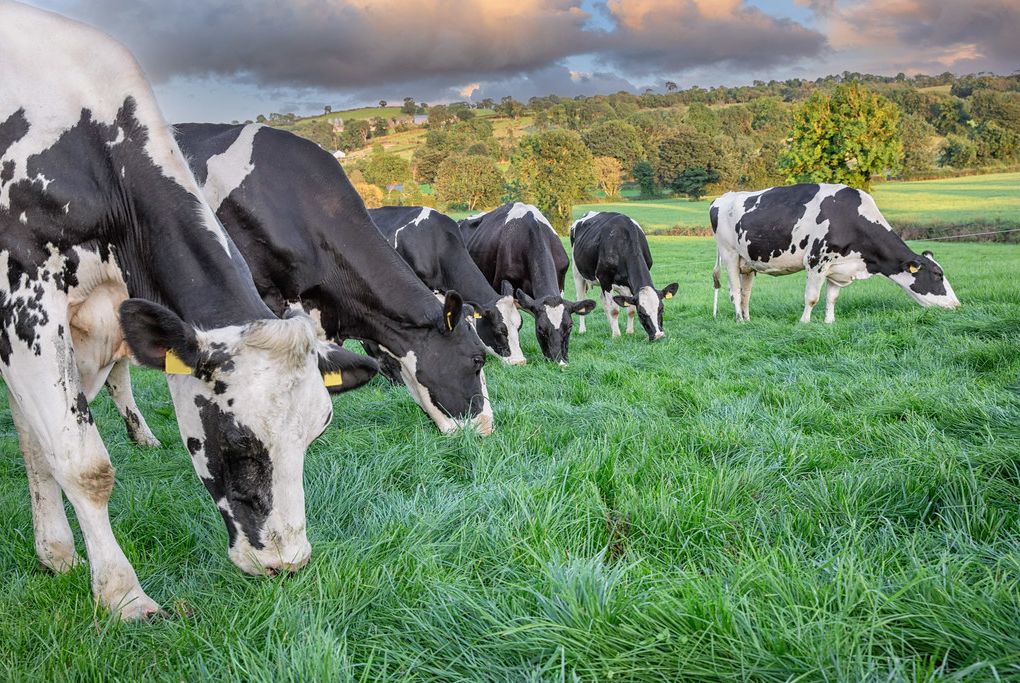Dry matter intake is the key driver to maintaining performance at grass and can fluctuate dramatically due to a multitude of factors.
Dry Matter Ranges from 12% – 20%. The higher the dry matter percentage, the more a cow can eat. If there is a lot of water in the grass for example, grass with a 12% dry matter, a cow will have to eat 133kg of fresh grass to get an intake of 16kg of dry matter which is difficult.
If the percentage dry matter of the grass is for example 20%, a cow will only have to eat 80kg of fresh grass to get an intake of 16kg of dry matter.
Remember a cow’s yield is directly associated with the intake factor, the more a cow is capable of eating the more milk she will produce.
Buffer feeding or extra feeding of concentrate is recommended on days when the intake factor is low i.e. on a wet day,a cow will eat lots of wet grass which has a low dry matter percentage and therefore she will need additional concentrates to increase her dry matter intake, which ultimately will increase her milk yield.
Cows and Cattle like swards that offer the ideal balance of fresh nutritious growth and with appropriate fibre content for optimal rumen passage.
Protein
Grazed leafy grass has a typical Dry Matter % of 15-20%, an ME of 11.5Mj/kg/DM and 16-25% protein as a % of DM.
Silage has a typical Dry Matter % of 16-28%, ME of 10.5- 11.5Mj/kg/DM and 12-18% protein as a % of DM.
Big baled silage has a typical Dry Matter % of 35%, ME of 10.5- 11.5Mj/kg/DM and 12.5-17.5% protein as a % of DM.
An 18% compound feed has a typical 86% dry matter, ME of 11-13 Mj/kg/DM and a 20.9% protein as a % of DM.
Protein in grass is highest in April and May and tails off later in the season, a cow cannot store protein, if the diet is too high in protein it is converted into urine (uric acid) and is lost from the cow.
If you see yellow patches or burnt grass in the field it may be an indicator that the cow/cattle are on a diet too high in protein.
Fibre
Fibre is essential in the ruminants to provide the ‘scratch factor’ essential to stimulate rumen activity. Fibre concentration can vary greatly during the growing season. Fibre is highest when the grass is going to seed and is lowest in early spring summer lush pastures. Fibre content is lowest when grass is very digestible. For optimum digestion the fibre in the grass as measured by NDF should be in the range 30-40% of total dry matter.
A low fibre diet may result in lower butterfat percentages and digestive upsets that may cause poor intakes and lameness.
A weekly ‘Grass Check’ will be published on Smyths Daleside Facebook page during the grazing season to provide updates on grass quality and management considerations.
For more information or technical support this spring, please contact your local Sales Representative or call the office on +353 (0)74 917 1300.
